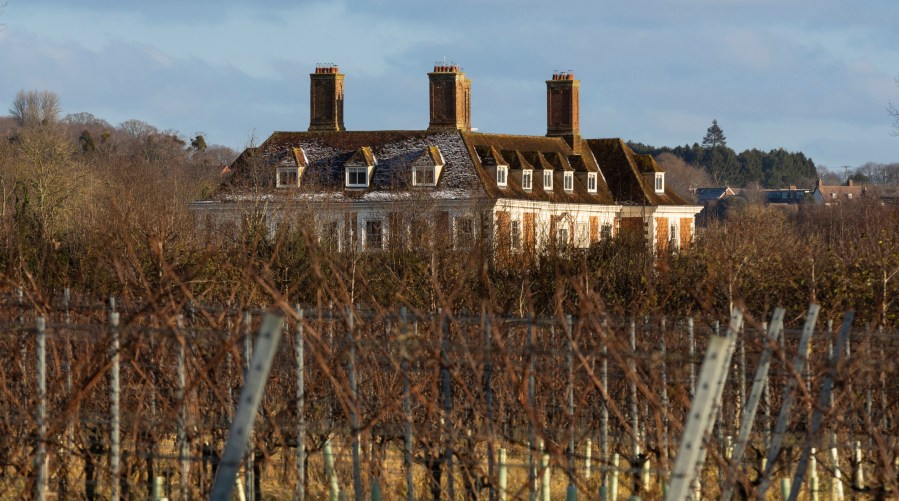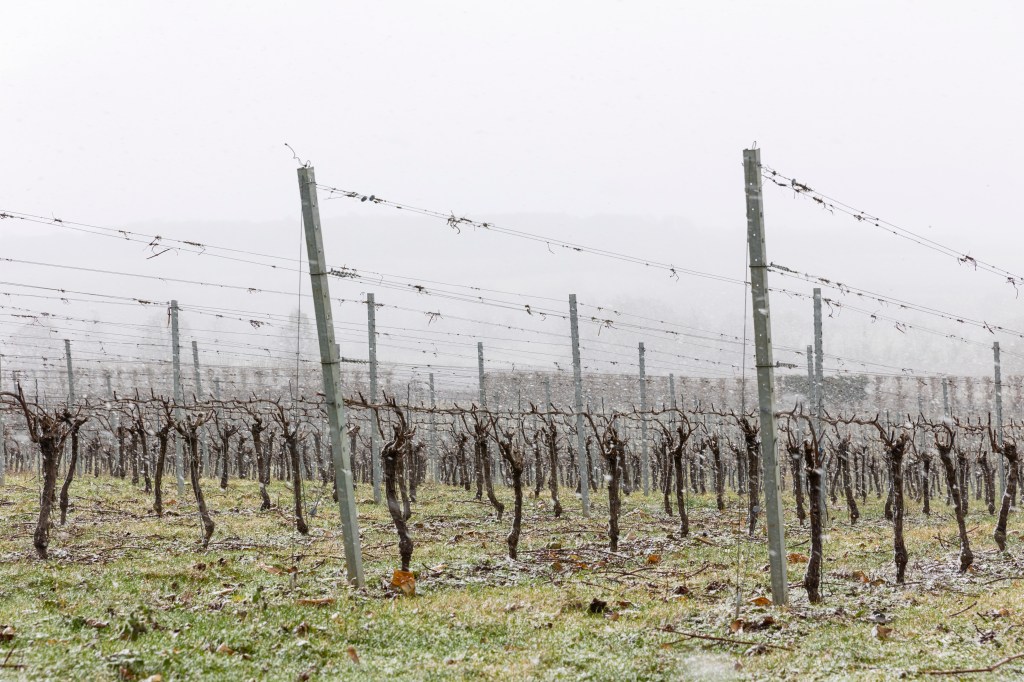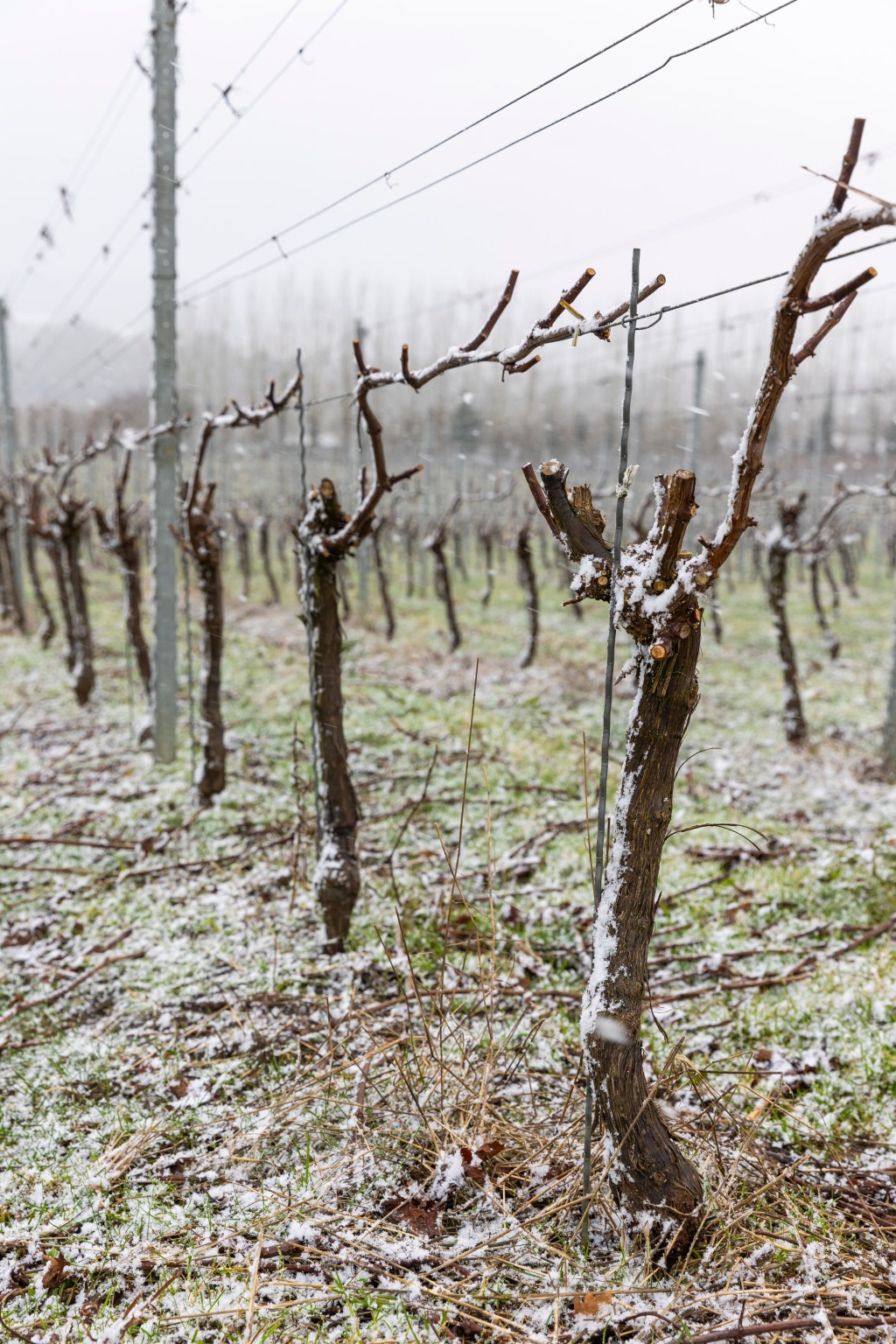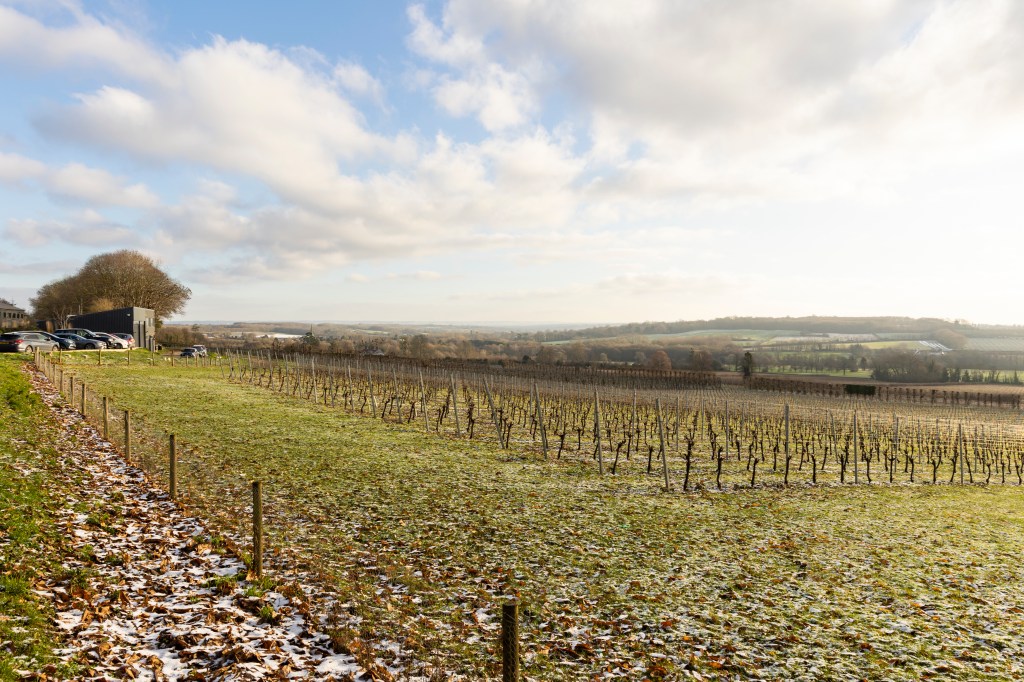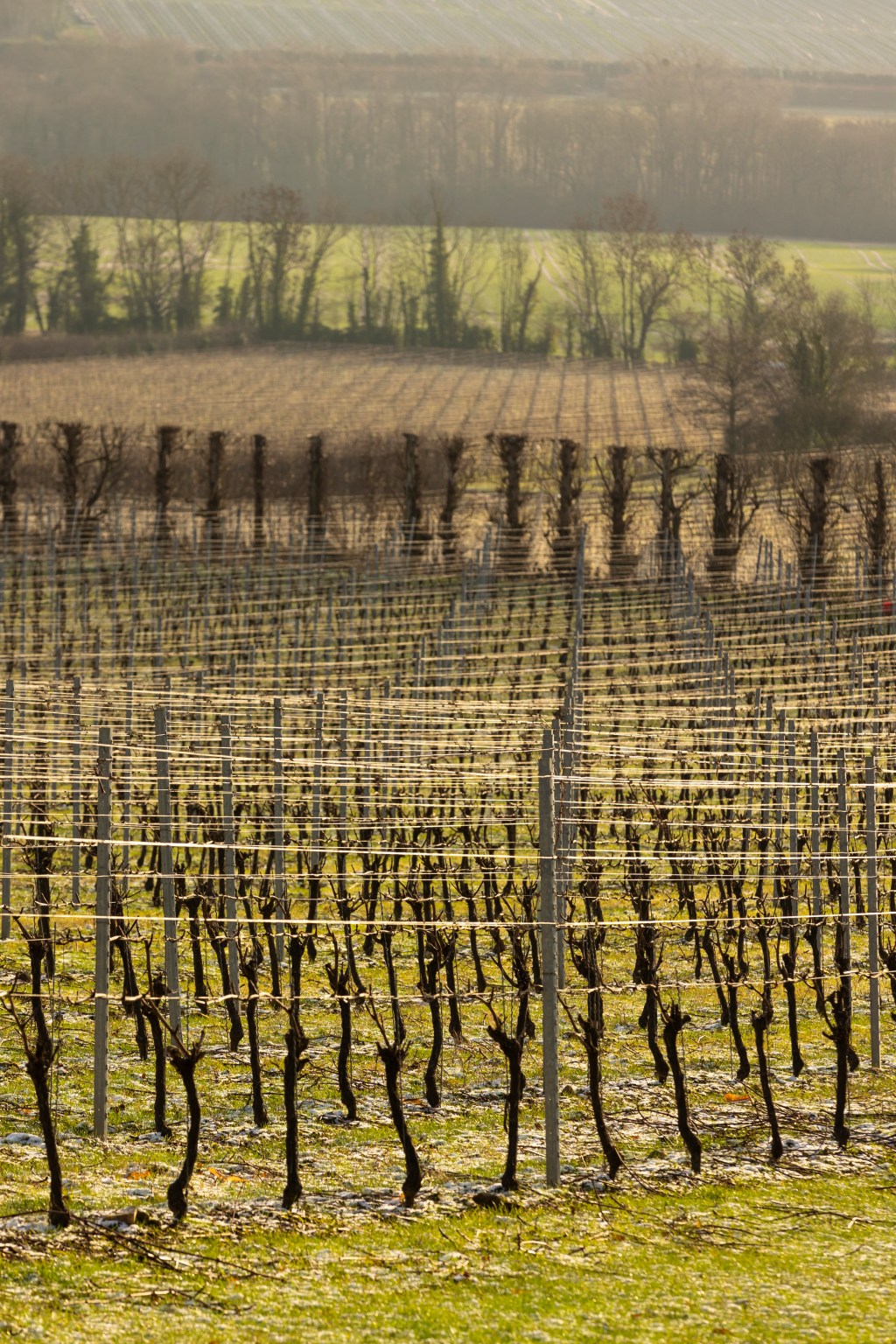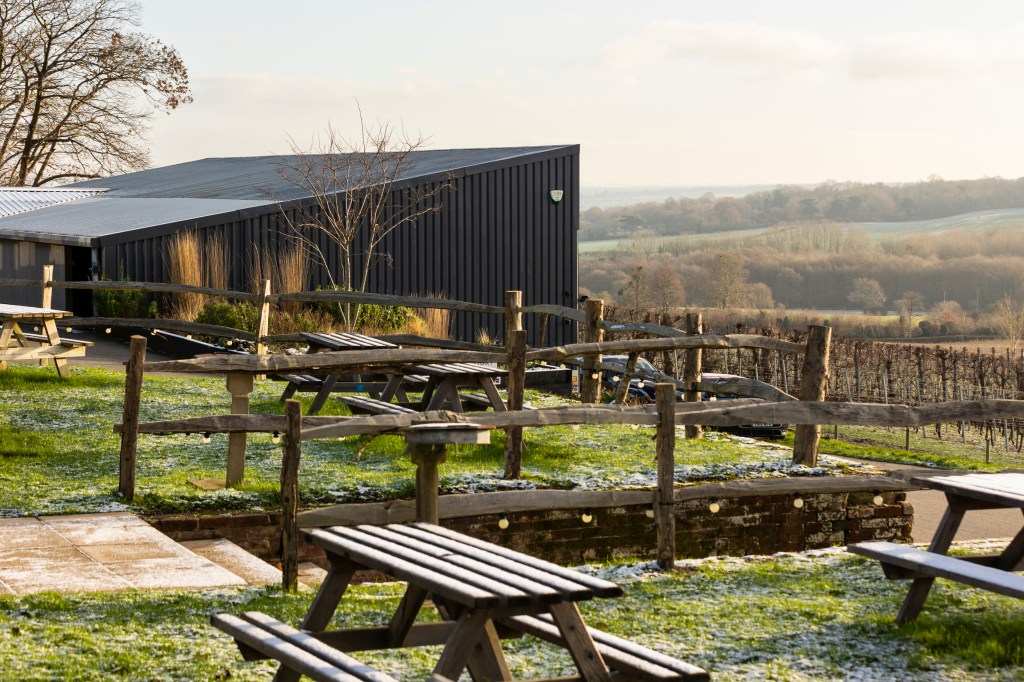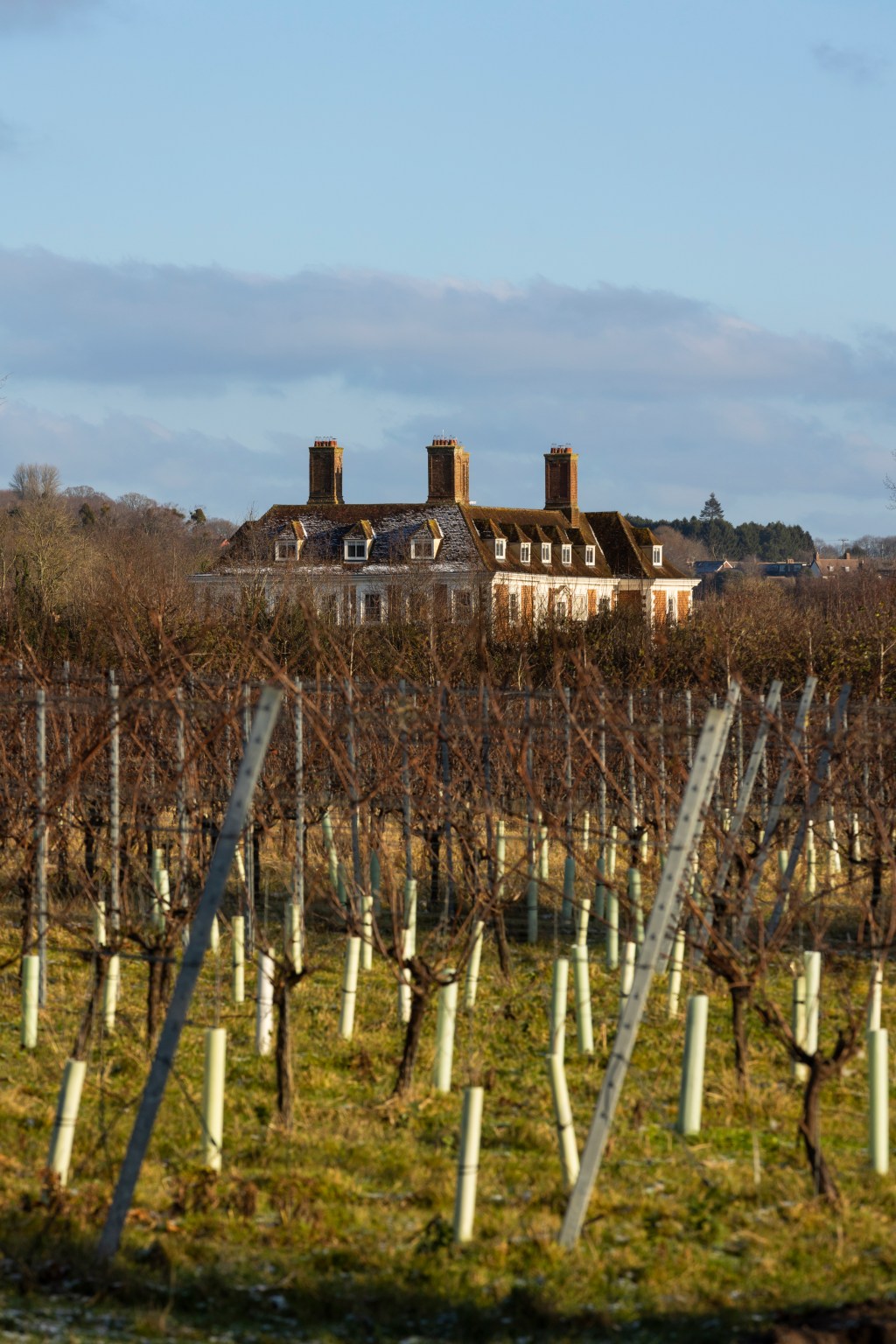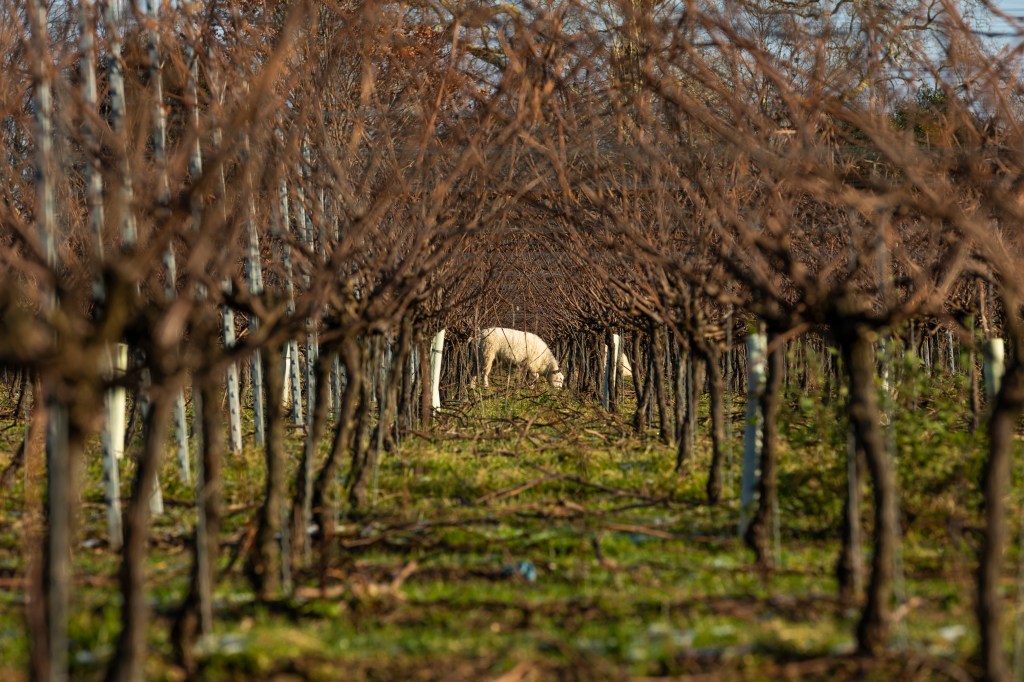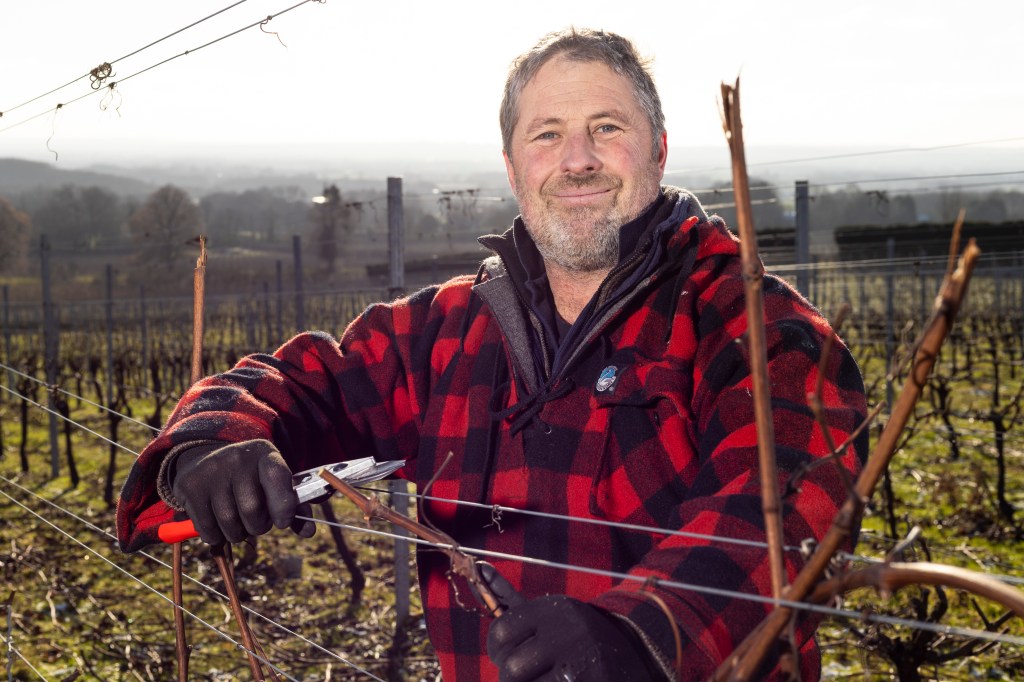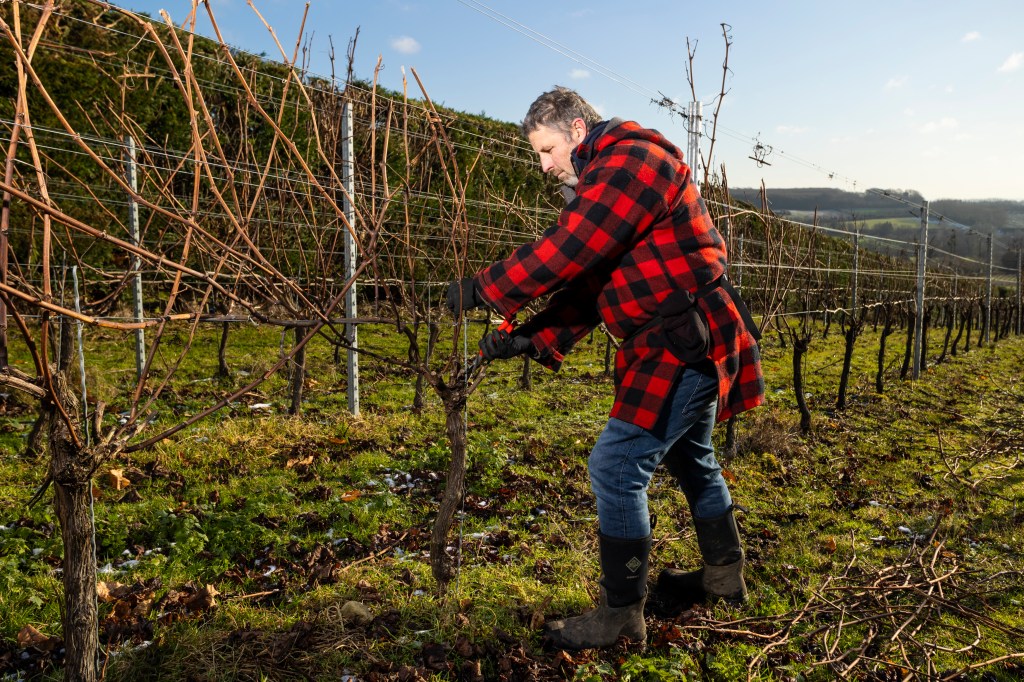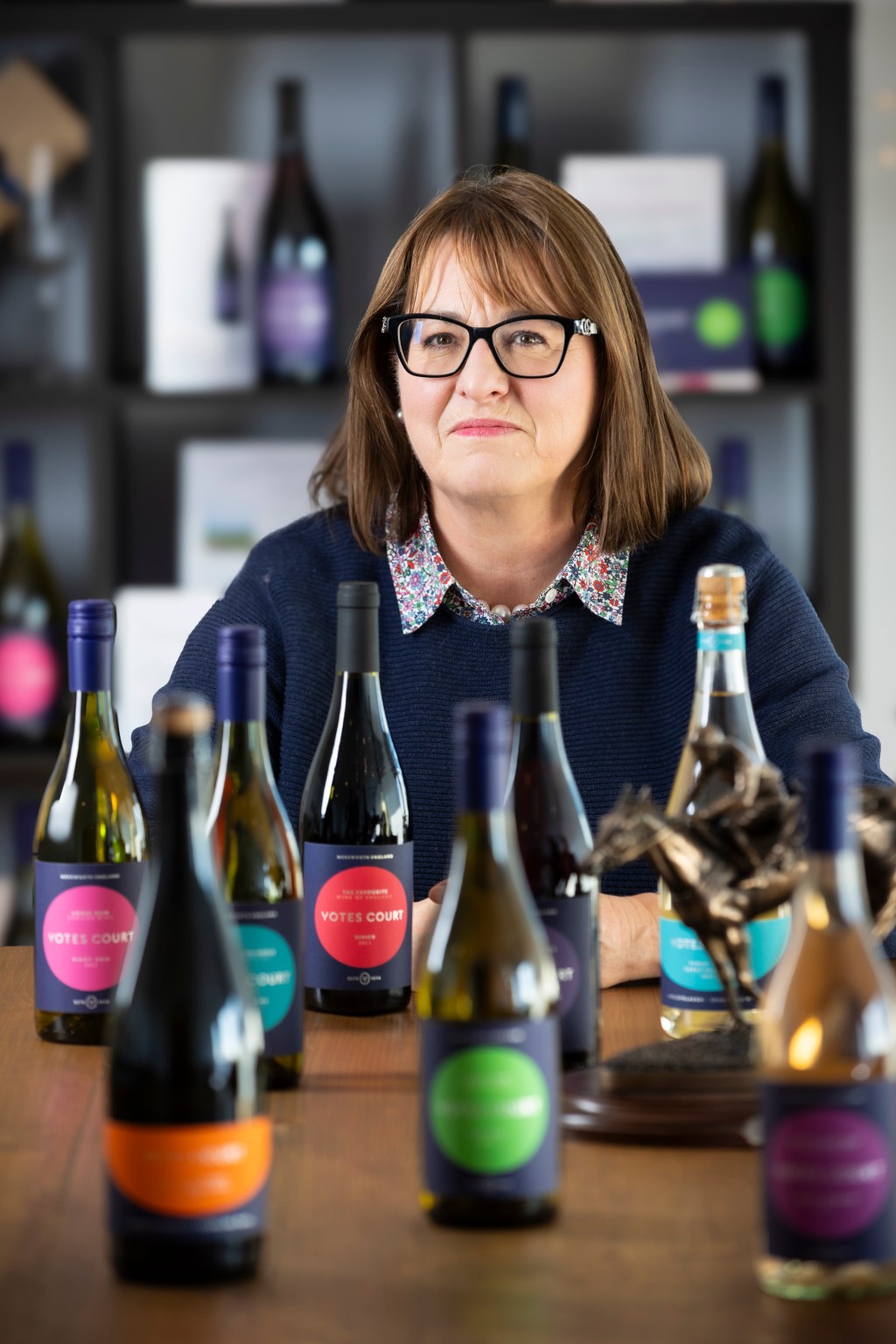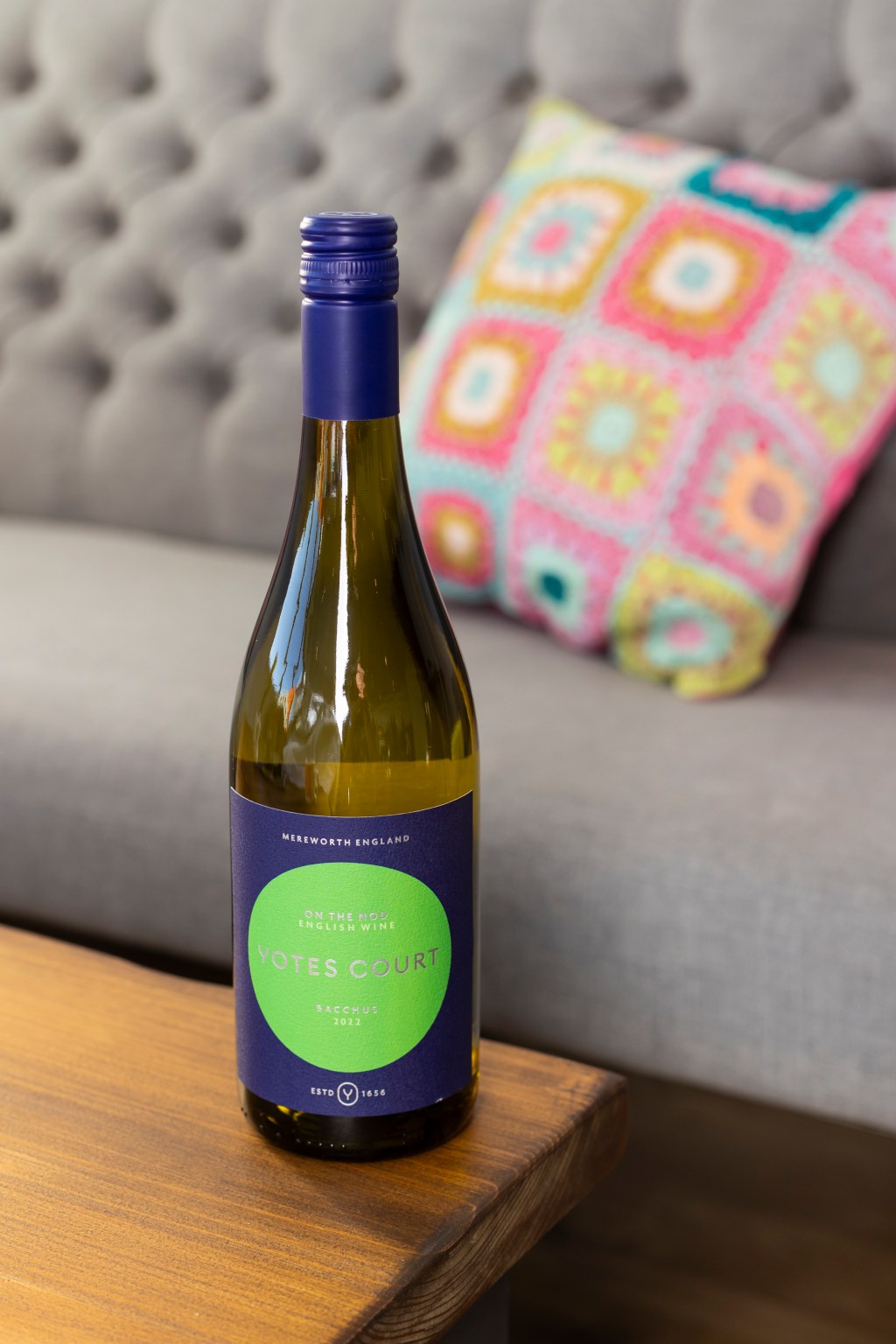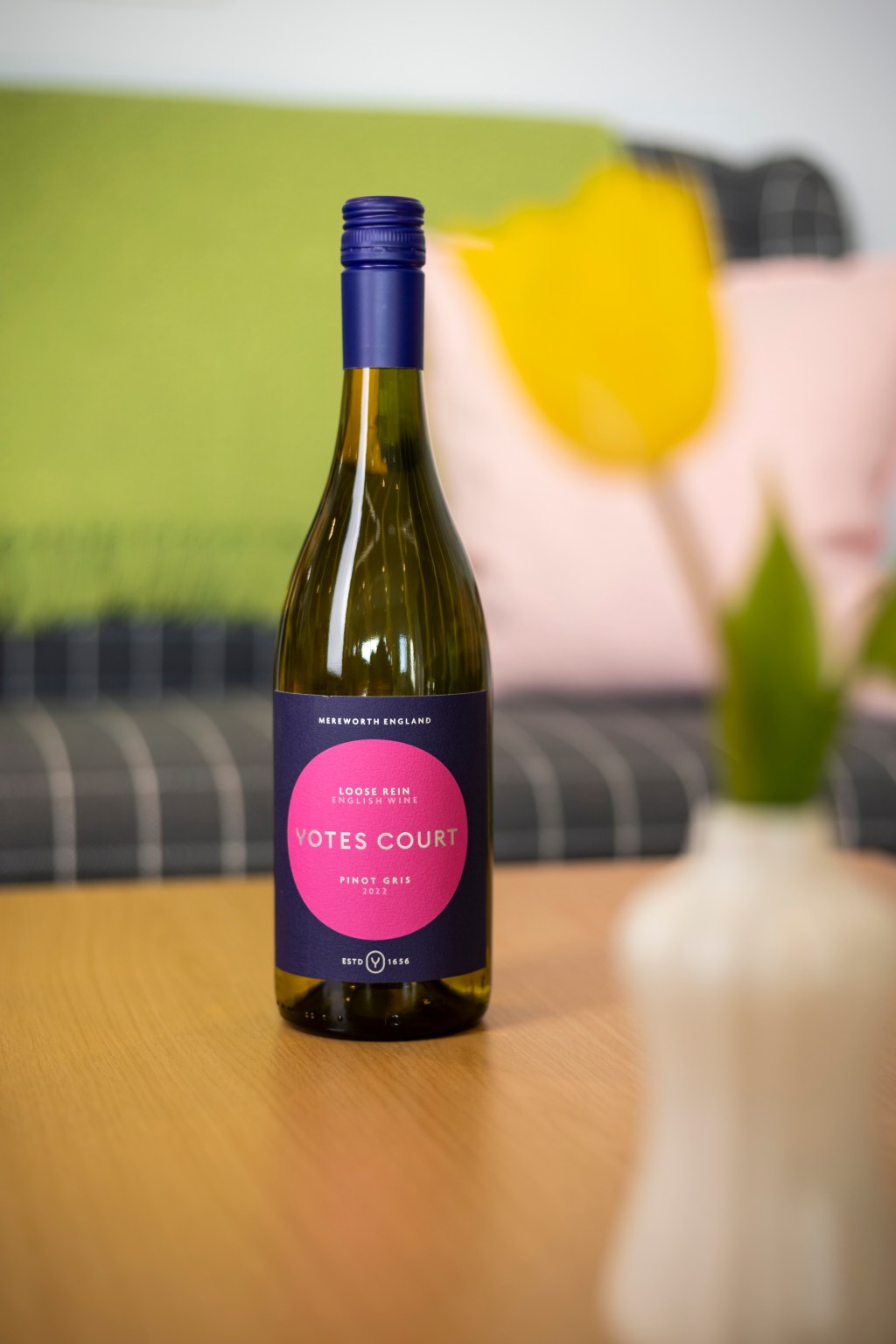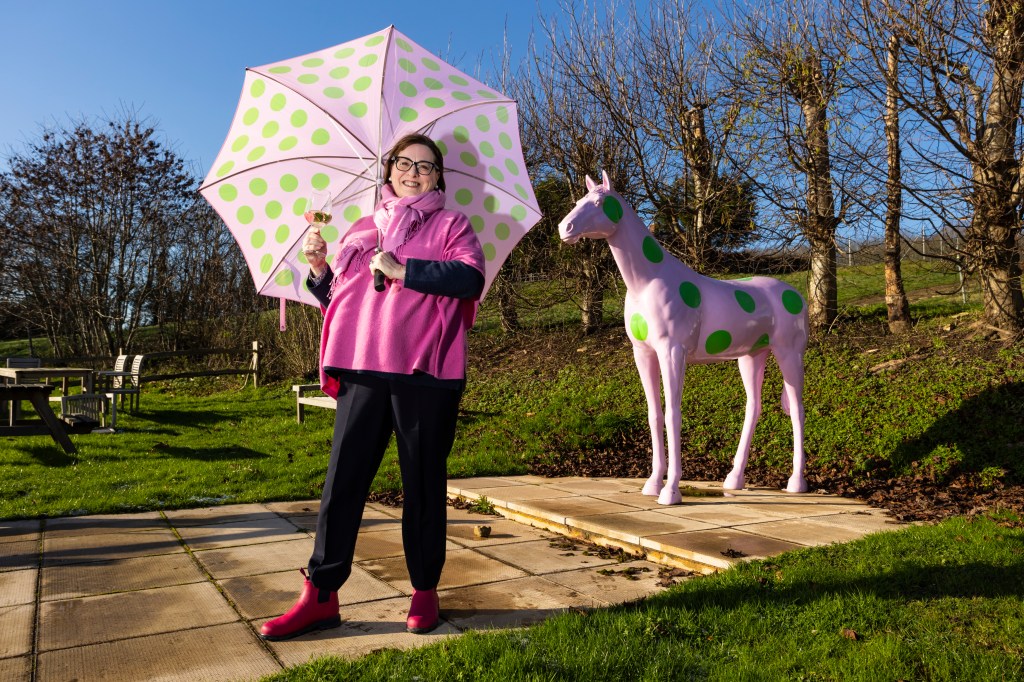The view from the tasting room at Yotes Court Vineyard is simply stunning and the more time that is spent at this Kentish location the more fascinating it becomes.
Owner Susannah Ricci along with vineyard manager Tony Purdie have between them applied skill, imagination and hard work to make Yotes Court into a flourishing vineyard business, offering a fantastic brand image and producing unique wines with a focus on individuality and exceptional quality.
Susannah Ricci and her husband purchased the Grade I listed Yotes Court more than a decade ago. According to Historic England there are around 500,000 listed buildings in England and of these only 2.5% are deemed so historically significant that they are given a Grade I listing. Other examples of Grade I listings include Vintners Hall London or Dover Castle in Kent. Becoming the caretaker of such an important piece of history brings with it great responsibility and the house and gardens have been lovingly restored. When land adjoining Yotes Court (that had been in fruit production) became available Susannah was sure she wanted that land to continue to be in agricultural production and in a sense connected with the original estate.
There are several ways that visitors can enjoy Yotes Court Vineyard. From March to October the vineyard is open Wednesday to Sunday offering visitors the chance to book a vineyard tour followed by a structured tasting. “Wine tastings with lunch were very popular before Christmas,” said Susannah. A self guided tasting is also available. The cellar door at Yotes Court means visitors are always able to take home a bottle or two.
From the top of the vineyard looking down across the vines with the Kent countryside and the Bidborough Ridge in the distance it is easy for the visitor to become fully immersed in the experience. The website declares that the ethos at Yotes Court is “unfussy, inclusive and fun” which is a great way to describe the overall feel of Yotes Court and yet beneath that is the sense that the entire team at Yotes Court are striving for even greater excellence both in the vineyard and the whole experience of wine.
In 2016 over 95 acres were planted with 128,000 vines of Pinot Noir Chardonnay and Pinot Meunier. “There was a small bit planted in 2017 because that part of the land needed a little green manure to get it up to speed,” explained Tony. At the time this was the single largest planting of vines in the UK. After purchasing the land Susannah sought the help of experts to help her bring the land into production. It is clear that this decision was based on the idea that Susannah wanted to ensure that the land was used in the best possible way. “I knew I needed to get the right people and ask the right questions,” she said. A vineyard was only one of the possible uses of the land and at the suggestion of Strutt and Parker Susannah consulted Stephen Skelton MW who declared that the site was absolutely perfect for vines.
“Yotes Court was for me, an ideal site for vines. Being below 100m above sea-level, a south-facing slope, well sheltered and frost-free. Added to that was the soil, which had a good ragstone content, aiding drainage and heat retention. The site was mainly divided up into sensible sized blocks for additional shelter. It was planted with a high density of vines which both helps ripening and increases yield. Results to date have been very encouraging,” said Stephen Skelton MW.
After advising on varieties and clone selection among other things Stephen put Susannah in touch with vineyard manager Tony Purdie who relocated from New Zealand to Yotes Court and has managed the vineyard since that initial planting.
The working relationship that has built up between Susannah and Tony is one of the reasons for the success and continued development of Yotes Court. Originally the excellent clean fruit grown at Yotes Court was used for traditional method sparkling wine by another Kent producer.
“Key to the operation at Yotes Court is that the site grows amazing grapes,” said Tony. With this in mind Susannah realised that it was necessary to also create a connection between the vineyard and the finished product. “I didn’t want Tony to get bored,” she said with a smile.
“I tried the still Pinot Gris and the Pinot Blanc from Stopham, and I thought they were so good,” said Susannah. The quality of these wines showed the possibilities for still wine production in England and led Susannah and Tony to begin the vineyard expansion at Yotes Court. In 2018 the varieties Pinot Blanc and Bacchus were planted and in 2019 Pinot Gris was also planted and there is also a small parcel of Divico vines. The new plantings expanded the area under vine by another 10 acres. This land had previously been planted in a maize and spring wheat rotation and there was also an area planted with apricot trees that were suffering from an infection. “This land is 148m above sea level but the land is too good for arable production,” said Tony.
The decision to make this expansion has allowed Yotes Court to launch both still and sparkling wines under their own label. The branding of this wine is unusual in that each wine looks like an individual but is also clearly part of the “Yotes Court family,” said Susannah. This is extremely difficult to achieve but is done so seamlessly at Yotes Court that adding a new wine or releasing a limited addition is a natural extension.
For the wine branding Susannah drew inspiration from the race horses she owns and this adds to the feeling of connection that runs across the wines. “The sparkling wines are all named after winning horses and the still wines are all named after racing terms,” she said. Susannah described how her horse ‘LiveLoveLaugh’ was successful at the Topham Chase in 2021 which is one of only three races held over the Grand National Fences but that owing to the pandemic he did not get the traditional winners treatment so to celebrate she named a wine after him.
‘LiveLoveLaugh’ is an early release traditional method sparkling wine made from Pinot Gris grapes. Tony added that this is a fruit driven, easy drinking sparkling wine which was first produced in 2021. It has proved very popular at the cellar door and is sold in pubs and restaurants across London. For the 2022 season the vines required special care to ensure that the grapes maintained the correct balance of sugars and acid whilst holding on to the fruit flavours that make this wine so noticeably different. The secret to this has been canopy management Tony explained. The wine maker is Nick Lane at Defined Wine in Canterbury.
It is clear that the connection to the finished wine is important not just to Susannah and Tony but to the whole team. “In the early years the grapes would leave in our distinctive pink bins and the fruit was excellent; we were really proud of it and it seems sad not to see it return as made wine,” Tony said. “Getting that direct feedback from the customer with people coming back time after time, is just brilliant,” added Susannah.
Standing opposite the visitors car park is a statue of a pink horse with green spots ready to welcome guests to Yotes Court. This statue is a fantastic way to introduce visitors to the brand at Yotes Court but it also serves to show how the atmosphere of understated fun is at the heart of the brand.
Tony laughed as he told the story of the arrival of this pink horse: “Susannah explained that a horse was being delivered to the vineyard and asked me to take responsibility for it. I was a little concerned about this and the horse arrived in a proper horse box but when the back was lowered this horse was all covered in bubble wrap, I wondered if I was supposed to feed it.” The story only serves to underline that fun really is part of vineyard life Yotes Court.
Yotes Court sits on the Greensand Ridge “the ragstone based soil weathers down to sand and clay,” said Tony. “The clay soils contain colloids and this allows the soils to hold onto nutrients that are then plant available, but the best thing about Greensand soils is that they are free draining, so it is a light friable soil,” Tony explained.
The area has been connected with fruit production for centuries. “We knew a lot of the history of the site and it had been an orchard since the 1930’s,” said Tony.
Susannah and Tony had a good relationship with the previous owner, well-known fruit grower Harry Wooldridge and he was enormously helpful in identifying problematic parcels and those that would produce the best fruit.
Tony has worked in Hawkes Bay where providing irrigation in the vineyard is a major part of the viticultural process. “One site I managed was an old river bed with gravel stones and low fertility where we had to give the vines constant water for them to survive,” said Tony, although he was quick to point out that the water was from a renewable source. Describing the soils in England and Wales Tony said: “This is really one of the only countries in the world where the soils still have a good water holding capacity so even in a really dry year the vines can find enough water.”
Tony has been instrumental in the establishment of the WineGB pruning competition which took place at Yotes Court in 2002 and 2023. The venue for the 2024 competition has not been decided but Tony will once again be part of the judging panel.
“In the formative years you have to be careful about competition from weeds and it is about letting the vines grow into their natural space but once the vines are mature vine balance becomes the focus.
“We could cause over vigour in the vines and reduce crop production. A vine can be tipped into a vegetative state which can be quite hard to get back from.
“One way to get this balance is to lay a few more buds per metre per vine row and spur pruning will achieve this. Spur pruning will balance the crop load and shoot production. Spur pruning reduces the bunch size and bunch compaction while increasing the skin/juice ratio for quality wine production. Other benefits are a more even bud burst and greater plant available reserves in the trunk and cordon,” Tony explained.
Spur pruning does require more intensive canopy management as this will determine the amount of heat accumulation in the canopy. “Heat is more important than light, the temperature of the bud influences whether bud primordia becomes fruit, tendril, leaf or bud. That is why it is trickier to get big crops in cooler climates,” Tony added. Before anyone started to think this was an easy solution Tony pointed out that in a really hot year it is possible to remove too much leaf which could expose the berries to sunburn but leaving lots of leaf cover can keep acids high in the grapes. The more Tony discusses the ever changing challenges of viticulture in the south east it becomes clear that he loves the puzzle solving nature of growing grapes. Every year and every season adds to that pool of experience for which there is no substitute.
Tony has a major focus on producing clean fruit and as such he walks through the vineyard everyday. As he explains the processes across the vineyard with such an easy manner it is clear to see why so many people have turned up to undertake pruning in the vineyard on a snowy January day. “People just love working for Tony,” said Susannah confidentially.
“We have a whole team of retirees who have an amazing array of past careers and they help out at harvest and at pruning,” she added. It is clear that as the vineyard matures Yotes Court is also putting down deep roots in the community.
“In the summer we have university students and people who are keen to get outside,” said Tony. “All the people are so passionate about the work they do and the friendships they have created,” Susannah concluded.
At Yotes Court the aim is for the vines to produce on average 10 tonnes per hectare, ensuring that the vineyard is producing enough fruit from a business perspective but also that quality remains exceptionally high.
Adapting pruning techniques as the vines grow is not the only innovation that has been adopted at Yotes Court. When the vines were young to ensure that they were able to develop, herbicides were used, “but now that the vines are established we are heading to a regenerative style of Viticulture. I have been passionate about Sustainable wine growing for many years and we are accredited under the SWGB scheme,” said Tony.
“The best part of the scheme is that they challenge you to continuously implement practices that are beneficial for the whole ecosystem. Coming from New Zealand the industry really embraced sustainability, but regenerative farming is also about looking after the soils for people who are coming after us.
“Soils are one of those unique things in life that get better with age. Having got the vines established now we have to look after the soils.
“The vines in the areas where the soils had suffered from neglect previously were not happy and there were even a few fatalities in those blocks because the soil biology was not ideal.
“Bare soil is really a killer of soil. The sun heats it and degrades the microbes and of course our vineyard is on a slope and water retention in the soil on a slope is always important. However, as with all things cover cropping has to be undertaken carefully as it is really competition for the vines so you need to be patient. People who are not patient do not make good vineyard managers,” said Tony with a laugh.
“We don’t want a monoculture of cover crops either. We want to get it as diverse as we can but we have had to incorporate organic matter as well. After some trials we have been using Nutragrow which is a pelletised by product of biogas fermentation. This creates a slow release of macro and micro nutrients that are plant available. There is nothing huge so it will not cause vine imbalance,” he added.
Winter grazing of sheep is part of the move to regenerative viticulture at Yotes Court. Tony was unwilling to use sheep amongst young vines but now the sheep are grazed within 25 hectares of the vineyard. “Being from New Zealand it is nice to see sheep in the vineyard, they are a great way of nutrient recycling,” he said. “The sheep also clear the ground over the winter allowing for greater airflow which in turn helps protect against frost in the spring,” Tony explained. On the point of regenerative viticulture it is clear that at Yotes Court the aim is to incorporate as many practices as possible but doing this patiently ensuring that each footstep is on a solid foundation.
Talking about pests in the vineyard inevitably raises the subject of SWD but Tony pointed out that one pest that is not seen in the UK is grape vine mealy bug. “I spent 30 years in New Zealand panicking about mealy bug because it is a vector for virus, the whole world has mealy bug problems except the UK,” he said.
Regenerative methods can bring unexpected consequences. Tony explained: “We have found that cut worm caterpillar is now a problem. It doesn’t like bare ground and sterile soils so by planting cover crops and improving soil health, pests that haven’t been on one’s radar in the past suddenly become a problem.
“Cutworm caterpillars come out in the spring and crawl along the wire and just eat the whole bud away. It is possible to attribute this damage to blind budding which can be caused by many different diseases or to other damage such as deer or birds and because these caterpillars are nocturnal unless you go out at night you will not see just how destructive they are. It is just one more thing to be mindful about.”
“One of the problems in the UK is downy mildew. If you lose your canopy to downy mildew you lose the ability to ripen the fruit. It is important to keep on top of the spray programmes and to monitor. We have 23,000 entries on Sectormentor and we also use Sencrop which is great because if there is a hotspot the weather station can be moved so I can get details about leaf wetness. You really need to be pro-active in this maritime climate. It is easy to get downy mildew in the canopy if you are not vigilant,” Tony explained.
Discussing the 2024 season and what this may mean for the vines Tony said: “We had a cloudy wet summer which produced quite big canopies so the canes we are laying down are quite vigorous. We had an above average heat during flowering in 2023 which is around the time the bunch primordia set so there is the potential for another good season. The vines are in their ninth season and that means that the root structure is well established, so we can be fairly certain if we have a good initiation the year before we will get a good crop the following year, but there are numerous other factors that will influence this.”
Looking to the future Yotes Court will be releasing a still Chardonnay this summer and in the vineyard Tony is very positive about the potential of Divico as a variety that he has found easy to grow with minimal inputs that also makes great wine.
As the snow falls on my journey down past the vines it is obvious that much has changed at Yotes Court since the initial planting. This beautiful countryside and those who are connected with this vineyard and this brand are taking every opportunity to grow with those vines as they move into maturity taking each new step in a well thought out manner looking to achieve excellence in every way.
- Tony Purdie
- Susannah Ricci
Photos: ©Martin Apps, Countrywide Photographic

